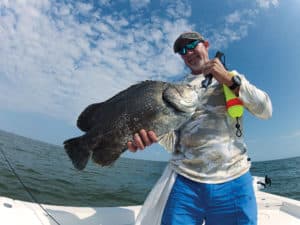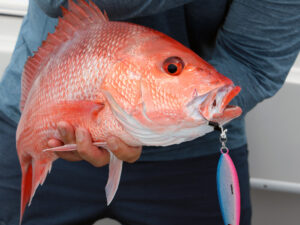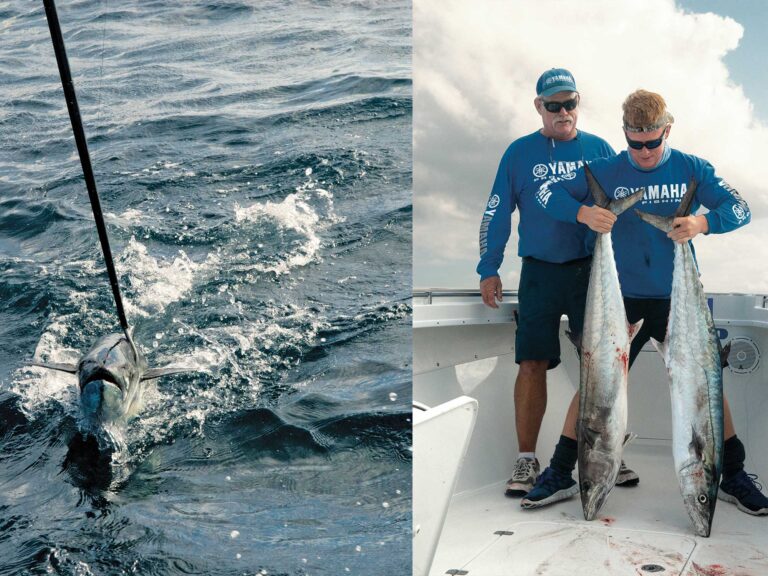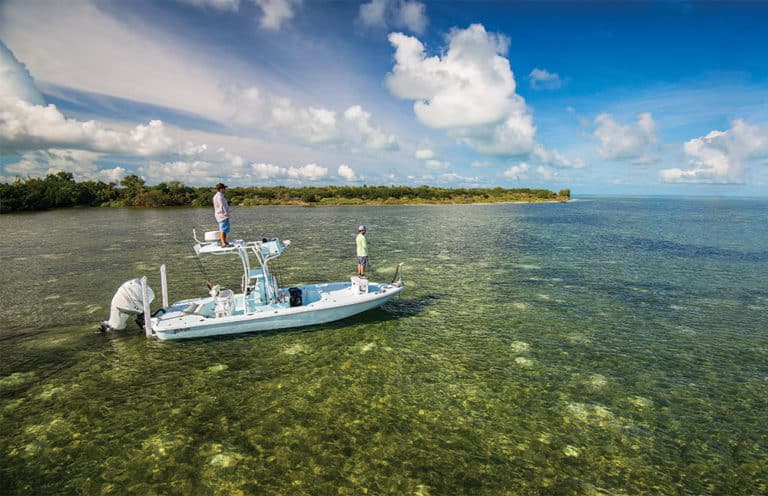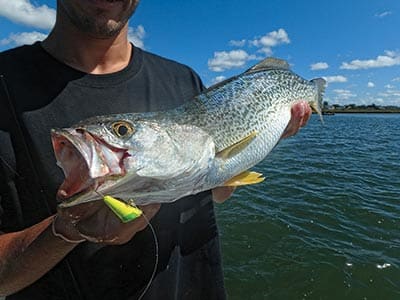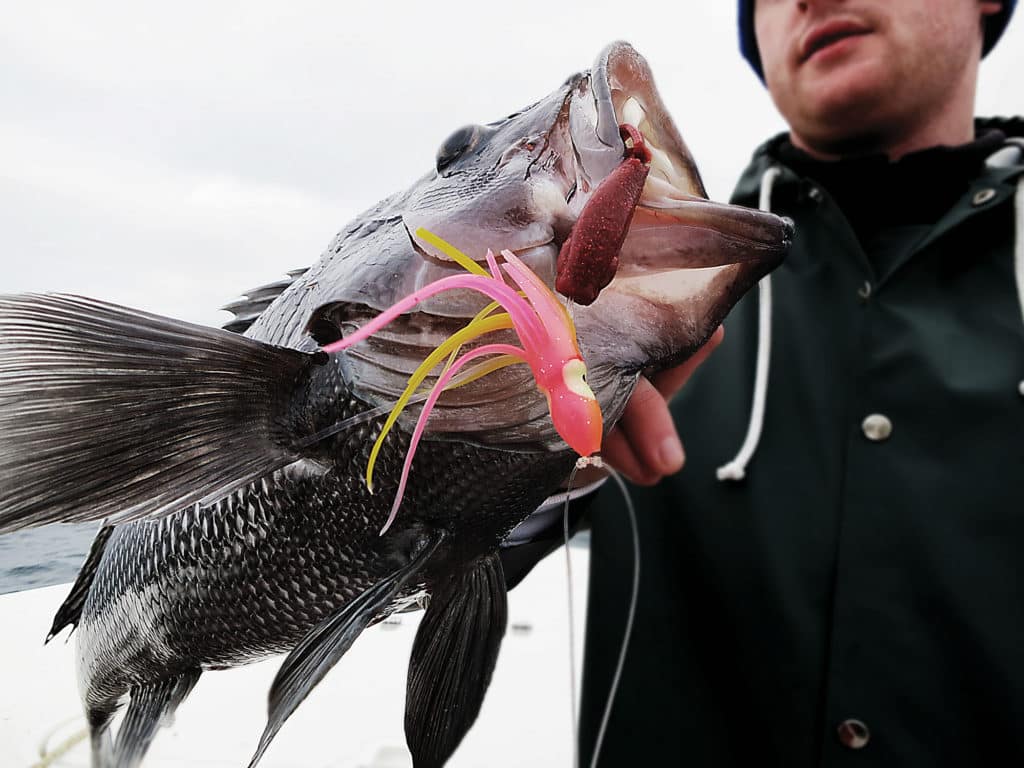
Kinship
Sean Reilly stood in Capt. Al Crudele’s Bayhound woefully holding on to his 7-foot rod and watching 50-pound braid evaporate from his reel as a 300-pound mako shark somersaulted and sprayed us with water on every re-entry. But this isn’t about a mako shark, it’s about what the mako shark ate.
For three hours straight without a minute’s break, our crew of five reeled in humpback black sea bass two to three at a time, which no doubt attracted to the area every bluefish, bluefin tuna and mako shark — one of which had eaten Reilly’s catch. Black sea bass fishing was hot. When the winter sea bass bite is on, it’s nonstop action 50 to 80 miles off New Jersey’s coast, where humpbacks stack so thick that a crew of five can load a coffin box with 3- to 7-pounders in a few hours’ time.
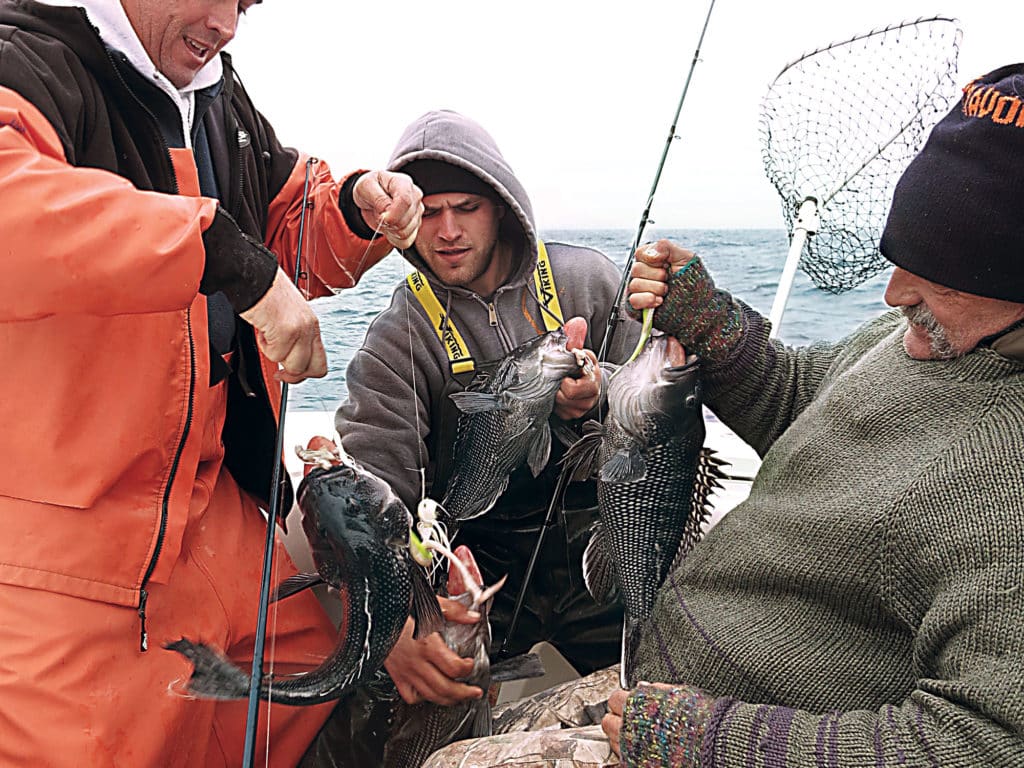
PICK YOUR SPOT
Come wintertime, black sea bass migrate off the coast and in a southerly direction, staging on the 50- to 80-mile wrecks and rock piles, seeking water temperatures between 54 and 63 degrees. Crudele chooses his sea bass spots wisely. “In November we’ll start on rocks in the 40- to 50-mile range, but by December we hit the glacial rock piles inside Baltimore canyon,” he explains.
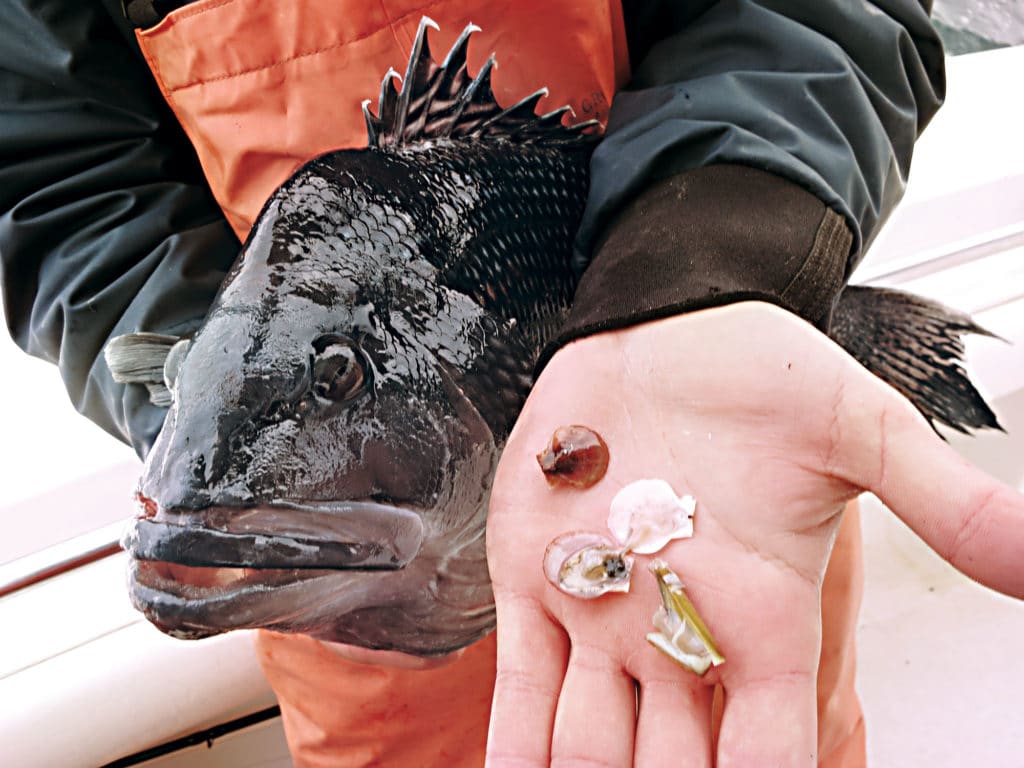
SWS PLANNER
Where: 50- to 80-mile rock piles and wrecks off the New Jersey coast
When: November through February
Capt. Denis Katliarov of Russian Roulette, a major sea bass hound, states, “Ninety-nine percent of the time, I fish wrecks, our primary structure up in north Jersey. We’ll search out low-profile wrecks, which hold more big fish close to the bottom. Ideally, anything that comes up about 10 feet is the relief we look for.”
You don’t want to waste gas looking around, so pick the right spot by checking water-temp charts and distances beforehand. Katliarov says, “High structures tend to hold smaller fish, while low-profile wrecks attract larger sea bass. If a wreck’s giving up all small sea bass, we’ll move pretty quickly to find another one.” Crudele adds, “We’ll run past a spot and drift over it, prospecting with jigs first to see who’s home. If we see some nice fish come up, we’ll switch over to bait so as not to bring in the dogfish, which take over and cut every sea bass in half on the way up.”
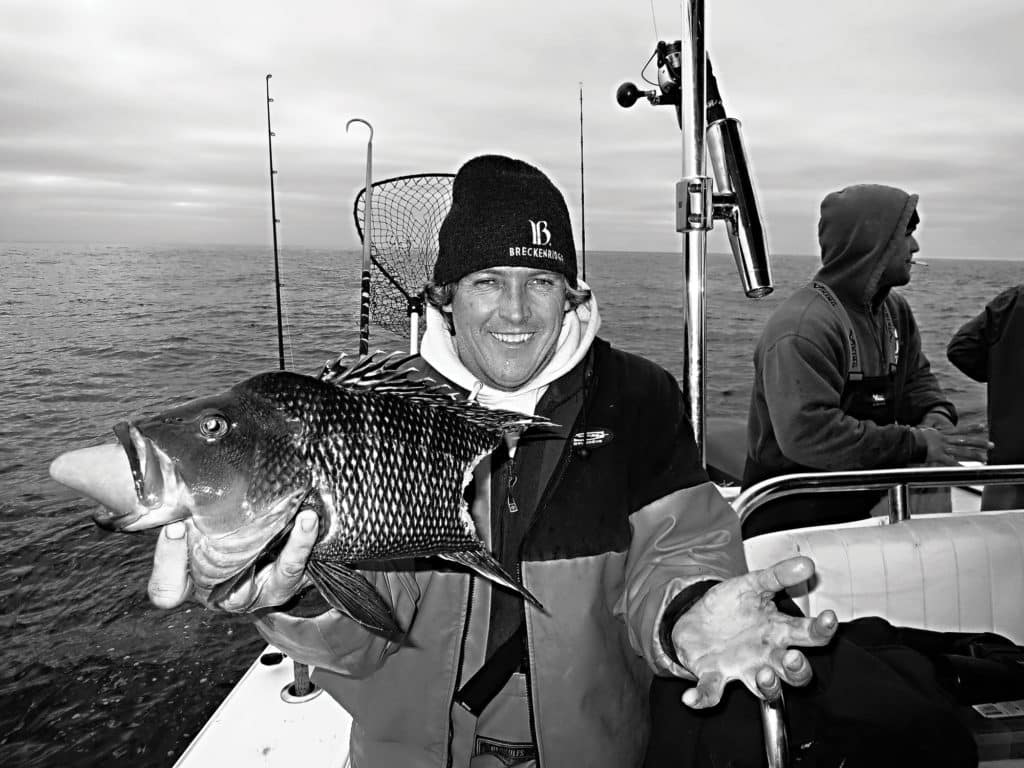
TIME IT RIGHT
“If I know we are on a big fish spot, I’ll set the anchor. We’ll work that spot hard, then bridle the anchor and shift around to find the honey holes.”
Timing is one facet to success; another is choosing to either anchor or drift. Katliarov prefers to anchor. “We can see if people are catching small fish or large ones, then we’ll make a move or stick it out based on that, as sea bass tend to school with same-size fish.” Crudele, however, likes to work a spot by drifting it a few times to determine the size of the fish, then anchor up. “If I know we are on a big fish spot, I’ll set the anchor. We’ll work that spot hard, then bridle the anchor and shift around to find the honey holes.”
On our trip, minimal winds and little current let us slowly drift over a spot Crudele marked on the plotter. Once the wind blew too strong to drift effectively, he anchored up. We soon began to load the cooler with quality sea bass, but after a half-hour, we started seeing smaller fish. Crudele knew it was time to move, but not far. He bridled the anchor line and, paying out a little at a time, shifted us 30 to 40 feet, and we were into monster sea bass of 4 to 7 pounds. “Many times people leave a wreck thinking they picked apart a spot, but all you have to do is find another part of the rock pile where they haven’t seen your baits yet,” he explains.
BAITING UP
“Fresh clam out-fishes anything,” says Katliarov. However, sea bass are opportunistic feeders, and as we landed fish I noted the forage they were spitting up: white legger crabs, baby squid, baby sea scallops, sand eels, anemones, sea mice and shrimp. Crudele carries fresh clams, but when he can obtain white legger crabs or fresh conch, sea bass go bonkers for it. “When fishing those conch and crab baits, it’s doubleheaders and tripleheaders,” he says. When baiting up, a 3-dropper-loop, high-low rig with 3/0 Gamakatsu Octopus hooks and adorned with red, orange or lime-green beads absolutely hammers sea bass. One of the most important tricks I learned from Crudele is to lance a bait only once through the tip, so it undulates in the current. Baits hooked multiple times spin and turn off the larger, wiser fish.
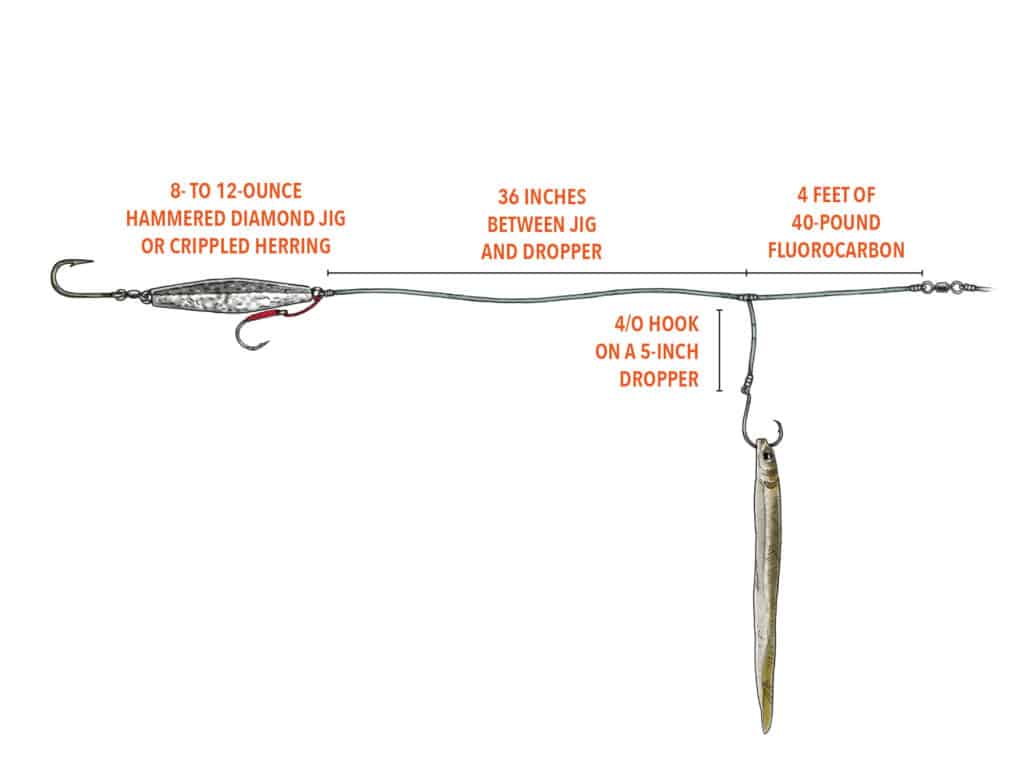
GET JIGGY
“We find the largest sea bass always seem to hit the jigs,” Katliarov says. “Drop the jig to the bottom and simply reel up slowly about 10 feet, then drop back down, bouncing it slightly off the bottom. Guys that swoop and sweep the jig won’t catch as many.”
A simple jigging rig consists of a 50-inch section of 40-pound Seaguar fluorocarbon leader and an 8- to 12-ounce hammered diamond jig or Crippled Herring jig on the end with a teaser tied roughly 36 inches up. Teasers can be 4/0 Baitholder hooks lanced with 5- to 6-inch curly-tail grubs or plastic sand eels in silver or greenish natural colorings. Crudele likes to use bright colors like cucumber, purple, fluorescent green or his favorite, black-and-blue. “Make quick bounces off the bottom, leave the jig on the seafloor and bounce it slowly, and shake the line so the teasers dance a bit to incite the strike. Don’t make long, swooping motions,” notes Crudele. Sea bass like their presentations frantic but contained, not long and fluttery.
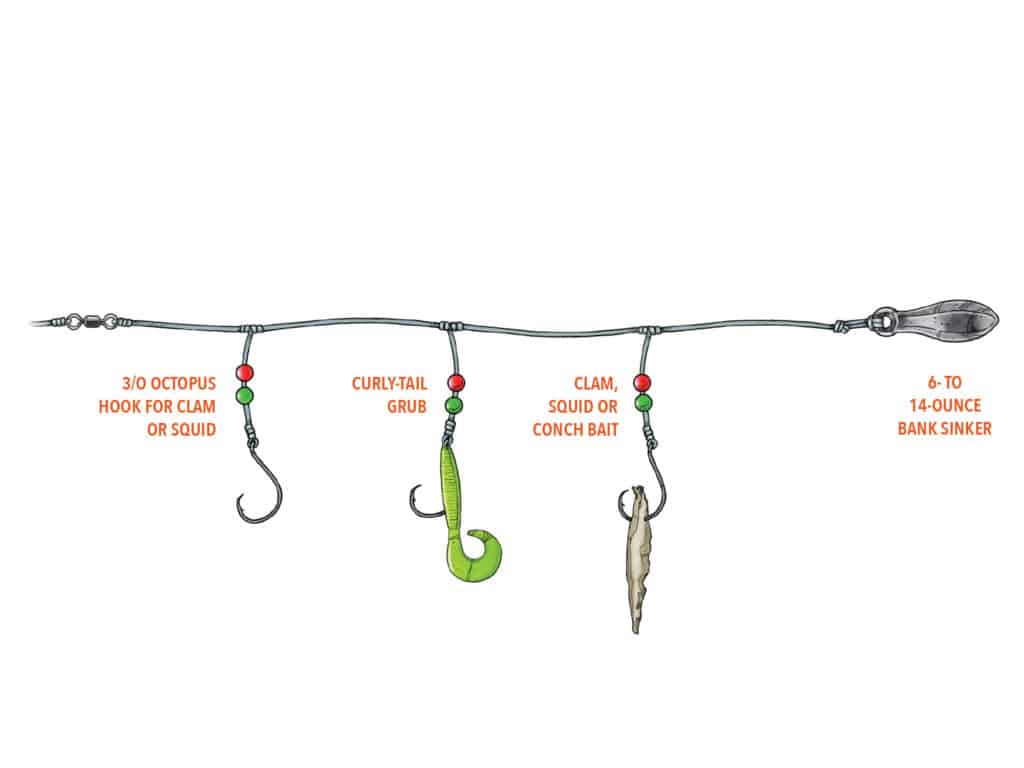
END GAME
Mako steaks would’ve been nice on the grill, but a coffin box full of succulent sea bass fillets made us all forget about the lost mako.
Whether baiting or jigging, when you feel you’ve got a Sea Bass on the line, the key to success is to reel steady and slow, so the fish’s head shakes don’t dislodge the hook. Always think slow and steady. However, getting back to that mako shark. If you do feel on the way up that something stops your progress, be prepared for anything.
The 300-pound mako that ate Reilly’s sea bass managed to get within 20 feet of our boat, but in a split second, the inevitable happened on its third spiraling jump: The mako finally snapped the undermatched 40-pound-test. Mako steaks would’ve been nice on the grill, but a coffin box full of succulent sea bass fillets made us all forget about the lost mako.



